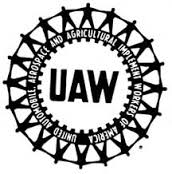The History and Present of Detroit’s Labor Movement
Unions “face a confluence of forces which are just overwhelming,” says Labor@Wayne Director Marick Masters.


There are probably three major tipping points connecting Detroit and labor throughout history, according to Wayne State University’s Labor@Wayne Director Marick Masters.
The first is the rise of the autoworkers in the 1930s and 1940s, which Masters says resulted in the middle class boom in the area.
The second is the struggle for civil rights, a movement in which unions played a significant role.
The third tipping point was the influx of foreign competition to the U.S. auto industry. Masters says that led to immediate, structural reductions in the workforce.
Ahead of Labor Day Weekend, Masters joins Detroit Today to talk about the history of the labor movement in Southeast Michigan and how the movement is doing in a post-Right-To-Work era.
“In 1986, there were about 600,000 union jobs in the Detroit metropolitan area,” he says. “Today there are about 200,000 union jobs.”
The unions “face a confluence of forces which are just overwhelming,” Masters continues. “To a large extent, labor doesn’t have a significant voice at the table. They come to the table often when it’s too late, they’re reacting to situation.”
To hear the full conversation, click on the audio player above.

